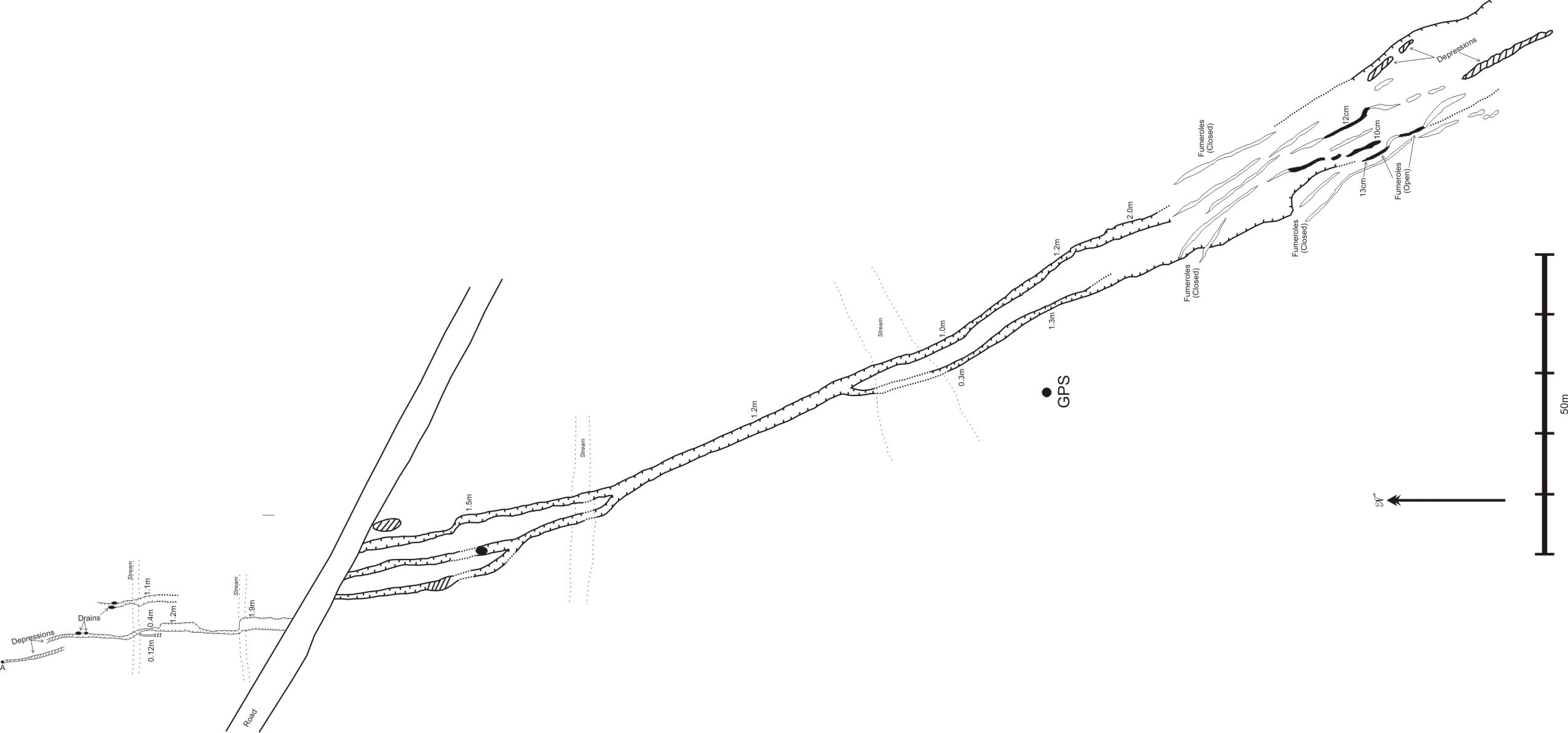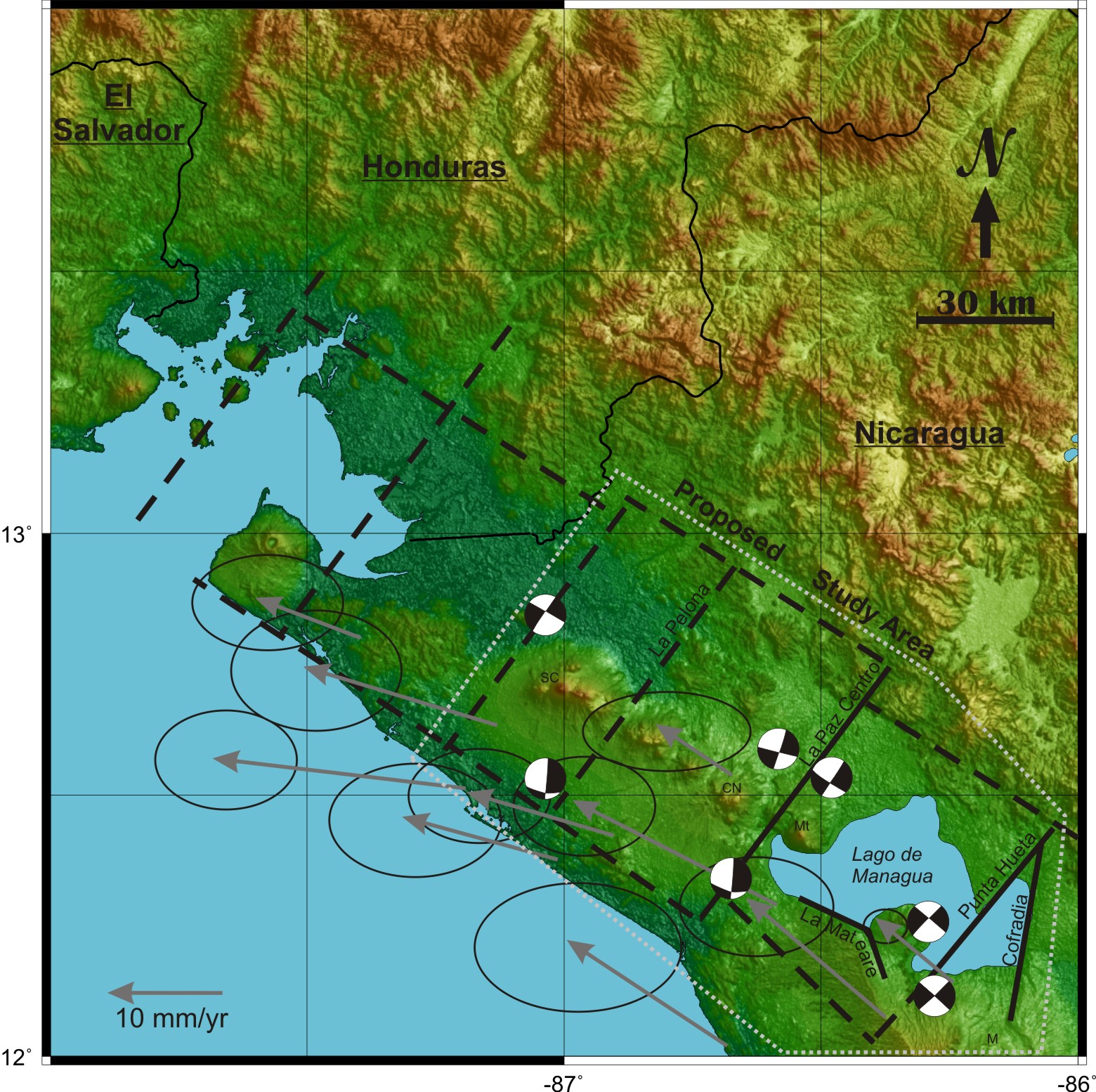Oblique convergence between the Cocos and Caribbean plates is interpreted to be accommodated by bookshelf faulting within the Nicaraguan Segment of the Middle American Arc (La Femina et al., 2002). Numerous recent earthquakes, such as the 1972 Managua quakes, occurred on northeast-trending strike slip faults. However, dextral, northwest-trending faults, also predicted by the bookshelf faulting model, have not been documented within this part of the arc-trench system. In an effort to test the bookshelf faulting model as it is applied to the Nicaraguan arc the Crustal Dynamics group is working in collaboration the Volcanology group to constrain the distribution of faults and their slip histories.
Characterization of faulting in Nicaragua is being accomplished through a combined structural and geophysical investigation. Our group is currently mapping faults in the northern portion of the arc at and near Cerro Negro Volcano (e.g., Figure 1) and will be using gravity and magnetic surveys to help constrain the locations and offsets of faults between Managua and San Cristobal Volcano (Figure 2).
Figure 1. Map of northwest-trending fault scarp located southwest of Cerro Negro Volcano. This scarp was discovered after the three Ms ~4.5-4.6 earthquakes that preceeded the 1999 eruption of the Cerro Negro volcano. Epicenters for these seismic events, however, are located northeast of Cerro Negro leaving the formation of the mapped scarp an unresolved mystery.
Figure 2. Digital elevation map of northern Nicaragua with known and inferred (dashed) faults comprising the bookshelf faulting. Focal mechanisms of historic earthquakes after La Femina et al. (2002). GPS velocities from Turner et al. (2007). Labeled volcanoes are: SC, San Cristobal, CN, Cerro Negro, Mt, Momotumbo, and M, Masaya.

